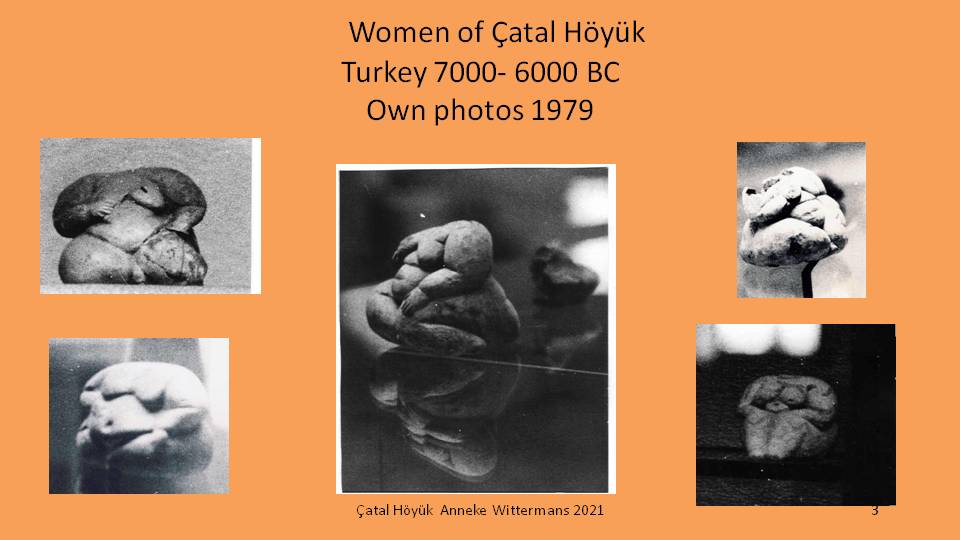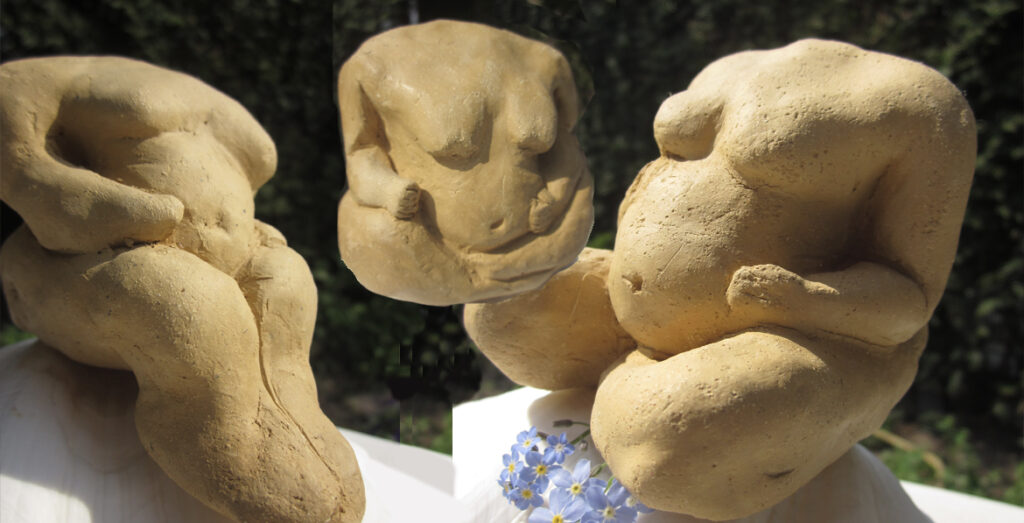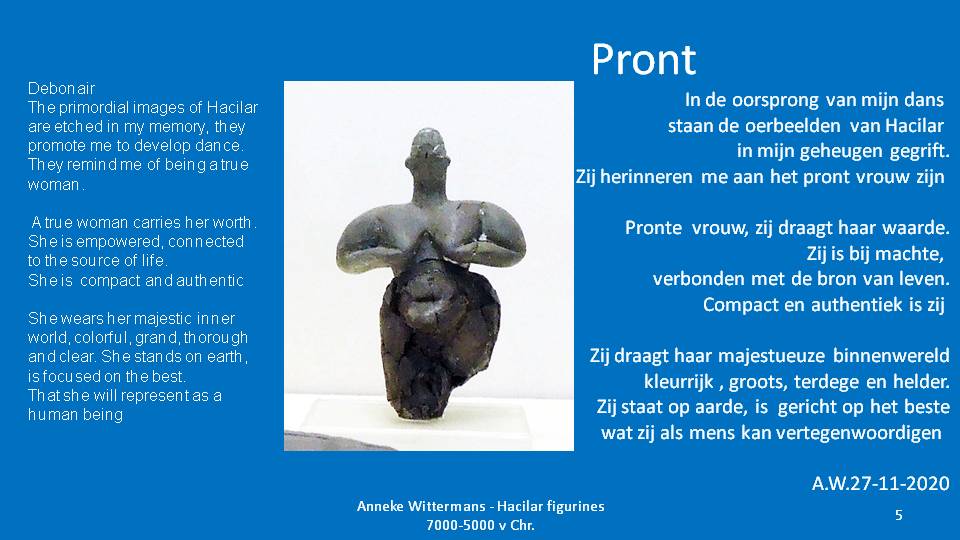In 1978, as an Architecture student, I visited the museum in Ankara. I modeled several figurines after this visit to the museum in Ankara. I also visited the excavations of Çatal Höyuk in Konya. Again I went to Ankara to the Museum to take pictures with coarse grain. See the earlier images. I am deeply moved by these figurines and moved by the women of Turkey whom I met.
I decided in 1980 to start to dance and explore these vital life forces, through dancing. Figurines Çatal Höyük, Hacilar, and Crete engrave the value of being a woman in my being. They arouse the desire to give shape to these different primal women. They urge me to dance and learn wisdom from their figurines. The images of Çatal Höyük and Hacilar made me experience for the first time the strength and wisdom of the primordial mother of the tribe. An image that has never disappeared from my retina from that time on.

Nowadays being able to move sensually becomes exploring and managing our erotic capital or x-factor. In Turkey, with the women in the villages and the Neolithic statues, I encounter an extraordinary potential of being a woman, which has touched me deeply. These figurines brought me home in my own body in 1978, I decided to dance ever since.
I write the poems and songs to remember the neolithic wisdom hidden in these figurines and Suzan van der Voort sings these songs. Anneke Wittermans
What do the figurines of Çatal Höyük tell us?

The first images in Çatal Höyük discovered are mostly seated pregnant women. Full women, images of female power. It is a mystery of what they reveal. Whether they are pregnant or leaders of their tribe. They sit at rest and thrive in life. They are women with firm breasts and sometimes pregnant bellies, perhaps carrying new life. They instill wisdom, tranquility, and surrender. I want to be a part of this wealth. The figurines of Çatal Höyük and Hacilar, regularly have their hands on their stomach and/or breasts. The bosom is the antechamber of the heart, the place where we find comfort and peace. With the dance I experience when we let the bosom shine, the nipples start to twinkle so we attract and radiate refinement. The power and sophistication of these images moved me and told me how to carry the bosom and realize how the bosom gives our self-esteem. In this way, we can radiate peace. (Project 2010: Mammae, the nourishing principle)
The power and quiet space that this image radiates shows a woman who carries her self-esteem. She is great, wise, and distinguished and she is a wise Crone woman, who has the experience and lives in her body. She radiates peace and confidence, on which a community can build. She has known many seasons and bases her wisdom on experience.
She lives for the whole, she is there for the earth, the people, the animals, and the land. She radiates peace in her demeanor.
Where do the figurines of Hacilar stand for
These handy figurines have a major impact on my image of being a woman. The figurines of Hacilar are often standing majestic women, who stand upright and look out into the world freely. They are an example of women with integrity carrying their values and vision. Strong, autonomous, intense, distinguished.
This touched me deeply and I decided to devote my life to dance and to discovering the body language of this fascinating female power.
The forgotten women’s heritage: where has this vital life force of women gone and how can we embody it again? That’s how my dance journey started in 1980 with these figurines.
These female figurines the size of my hand, turn my worldview upside down. My image of women in 1978 which I had until then, of my mother and all the women around me, was assertive, fluent, and feminist. Yet I had never met strong women. In Ankara in the Museum of Antiquities, I see and experience a woman’s power and beauty, which awakens me, making me aware of the beauty of women who are present in all her cells. These women of Hacilar radiate vitality, tranquility, peace, connection, loyalty, and self-esteem. These qualities that I aspire for my life from this turning point (1978).
What do the figurines of Hacilar stand for?

In Japanese and Chinese traditions, the physical center of gravity of the body is the seat of the internal energy Qi. They call this Dantian or tan tíen which is translated as “area of life elixir“.
In the Diadans, ‘UNG’ is the point of application, the size of a bouncing ball, located in the physical center of gravity. With this, the dancer controls the torso and the limbs. “If you get a grip on that, can get to it, it starts dancing. Also, the place where the erotic capital resides, where control, free play, flexibility, and self-esteem live.
There are three main Tan tíen. The first is, the gravity point ruled by Pluto and Mars, the second is the heart area ruled by Venus and Neptune, and the third is 3-eye, ruled by Mercury and Uranus. These figurines from Hacilar have those three Tan t’íen. The Hacilar women are showing this self-esteem and the realm of the elixir of life.
Minoan
Minoan wise female statues
Please join me and promote the feminine Wisdom in your own Region by sharing and showing the ancient artwork. Otherwise, the feminine fugurines get out of sight and we lose their wisdom and meaning.
Share and make the wisdom visible
